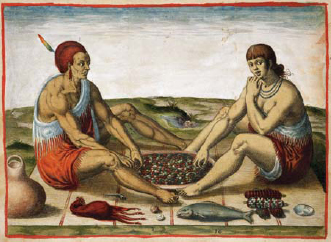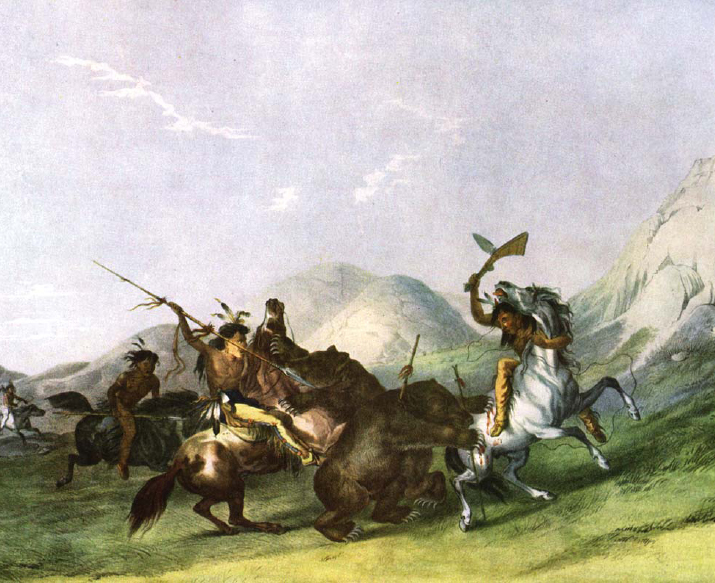1 Native American Cookery
What did the original inhabitants of the Americas eat? Their diet was made up of foods that they grew, hunted, or gathered from the wild. The territories of some native peoples teemed with rich and varied sources of food. Other peoples had to work hard to feed themselves. However, no matter where they lived, from the tundra to the forest, from the desert to the tropics, all tribes developed ways to eat well in their homelands.
Native peoples did not take food for granted. They had a spiritual connection to the plant and animal world. They knew their food came from both the bounty of the natural world and the knowledge acquired by their ancestors. As a result, their stories and oral traditions show how grateful they were for what they ate.
Hunting and gathering wild foods provided the mainstay for many Native American peoples’ diets. Such foods included fish, game, berries, roots, tubers, herbs, seeds, and nuts. Some of the things native peoples ate might be surprising, like insects or moss. But some native wild foods are part of the everyday diet of North and South Americans today.
In contrast to tribes who got most of their food from hunting and gathering, many of the native peoples of the Americas were farmers. Agriculture, the raising of crops for food, was important to tribes all over the New World. In fact, almost half of all crops grown today were once wild plants domesticated by Native Americans.
Two New World crops, corn and potatoes, are among the most important staples in the world today. Staples are foods that form the basic source of nutrition for humans.
When did the native peoples of the New World learn how to grow their own food? It is believed that around 8,000 years ago, the natives of northeastern Mexico began to cultivate squash and its close cousins, pumpkins and gourds. Corn was developed from varieties of wild grasses more than 7,000 years ago in central Mexico. Beans were domesticated around the same time that corn and squashes were. Native Americans traded the seeds of these plants, spreading them along trade routes throughout North and South America over thousands of years.
These three crops became the cornerstone of the diets of agricultural tribes. In fact, the Iroquois tribe of northeastern North America called corn, squash, and beans the “Three Sisters.” The “Three Sisters” balanced essential needs for proteins, minerals, and carbohydrates in the human diet. Good nutrition was important for nonagricultural tribes, too. They managed to find ways to eat well, hunting for meat and gathering nutritious and tasty wild plants.
Over thousands of years, native peoples developed healthful diets, preparing the foods of their homelands to create delicious dishes for their families. With colonization by the Europeans, many Native Americans lost their homelands and access to traditional food sources. Some native peoples adapted their lifestyles and eating habits to the changes brought about by colonization. Others, however, suffered the loss of a way of life and the healthful diet of their ancestors.

This 16th-century illustration depicts Native Americans preparing food. Though some of what they ate may seem strange today, the diets of the various tribes evolved over centuries and supplied the people’s nutritional needs from the available resources.
Beans are good for the soil, replacing nutrients that other crops, such as corn, take out of it. In addition, beans are nutritious because they are high in protein, minerals, and fiber.
Scientists now study the nutrition found in the traditional foods of native peoples. Native Americans who eat modern, processed foods often have a high rate of diabetes and other nutrition-related diseases. Those who eat their traditional foods are much healthier. By making traditional native foods more available, scientists hope to restore the delicious and varied menu that once nourished Native Americans. §

Mounted Indians close in on a grizzly. Hunting large animals such as bear, moose, and buffalo could be dangerous, but meat provided the main source of protein in the diets of many tribes.

